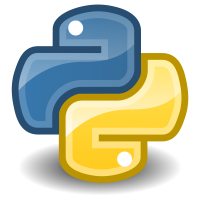Practical Python Programming: 0 - Getting Started
Hello and Welcome!
Let's get started to the Practical Python Programming Sessions based on David Beazleys course material.To participate at the practical python programming sessions make sure that you have the following tools installed:
- a python interpreter
- the version control system
git - an working editor (like vim) or an IDE like VS Code or Pycharm
See Basic Preparation for choosing a python interpreter. For the practical python sessions it is sufficient to have a python interpreter with version > 3.6
You don't have to be a git expert to participate, but you must know how to clone a repository.
First install git. If you don't know how to install git, look here: Installing Git
If you have installed git successfully clone the repository from here: https://github.com/dabeaz-course/practical-python
If you don't know how to clone a repository, have a look at "How to get a Git repository" in the Git user manual
So far - so good. You have prepared your system to with the needed tools and materials. Now navigate to the cloned repository in a file browser.
Working directory
Do all of your coding work in the
Work/ directory. Within that
directory, there is a Data/ directory. The Data/ directory
contains a variety of datafiles and other scripts used during the
course. You will frequently have to access files located in Data/.
Course exercises are written with the assumption that you are creating
programs in the Work/ directory.Solution Code
The Solutions/ directory contains full solution code to selected
exercises. Feel free to look at this if you need a hint. To get the
most out of the course however, you should try to create your own
solutions first.
Final step
Now you are nearly ready to go. One last thing, if you are new to our group it would be nice to introduce yourself here
So, let's have some fun 
